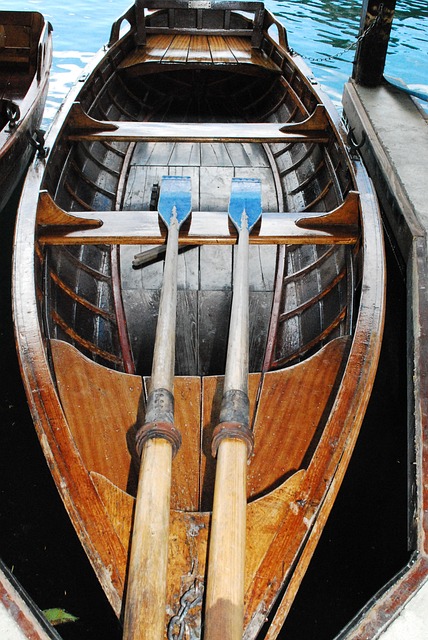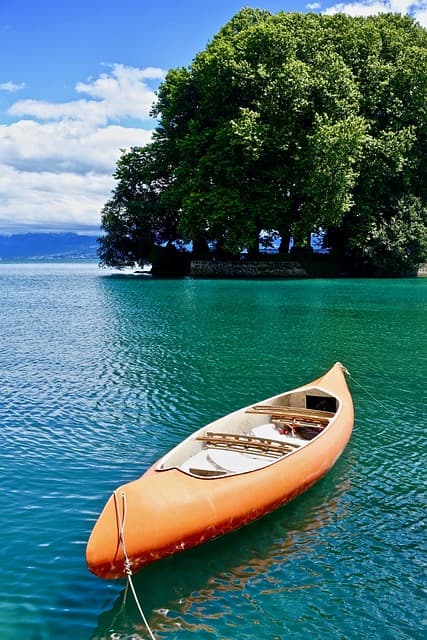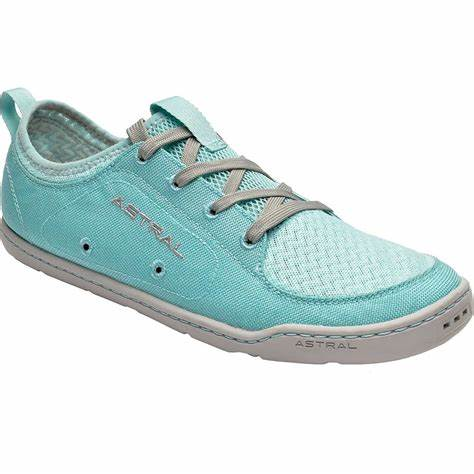Kayaking is a thrilling water activity that allows enthusiasts to explore serene lakes, rivers, and even challenging rapids. However, before you embark on your kayaking journey, it’s essential to understand the landscape of kayak pricing. The cost of a kayak can vary significantly based on a range of factors, making it crucial to research and budget accordingly.
Here are some key points to keep in mind:
- Wide Price Range: Kayak prices can span from budget-friendly options to premium vessels equipped with advanced features;
- Factors Influencing Price: Several elements, such as kayak type, brand, material, and additional features, contribute to the final cost;
- Investment Decision: Deciding on the right kayak involves considering your budget, intended use, and personal preferences.
Factors Influencing Kayak Prices
Understanding the factors that influence kayak prices can help you make an informed purchasing decision. These factors include:
- Type of Kayak: Different types, such as recreational, touring, fishing, and whitewater kayaks, have varying price ranges based on their intended use and features;
- Brand: Well-established brands often come with a higher price tag due to their reputation and quality assurance;
- Material: The material used in the construction of the kayak, such as plastic, fiberglass, or carbon fiber, impacts its durability and cost;
- Features and Accessories: Additional features like storage compartments, adjustable seats, and specialized accessories can drive up the price;
- Design and Performance: Kayaks designed for specific activities or with enhanced performance characteristics may come at a premium;
- Brand Reputation: Brands with a history of innovation and quality may command higher prices;
- Rarity and Exclusivity: Limited edition or custom-designed kayaks can have a significantly higher cost due to their exclusivity.
Types of Kayaks and Their Price Range
Kayaks come in various types, each tailored to a specific purpose. Here’s a breakdown of some common kayak types and their price ranges:
| Kayak Type | Price Range |
|---|---|
| Recreational | $300 – $800 |
| Touring | $800 – $1,500 |
| Fishing | $600 – $1,500 |
| Whitewater | $800 – $2,500 |
| Inflatable | $100 – $1,000 |
| Sit-On-Top | $300 – $1,200 |
Comparing Different Kayak Brands and Their Costs
Kayak brands vary in terms of quality, reputation, and price. Here’s a comparison of some well-known kayak brands and their average costs:
| Brand | Average Price Range |
|---|---|
| Old Town | $500 – $1,200 |
| Wilderness Systems | $800 – $1,800 |
| Hobie | $1,000 – $3,000 |
| Perception | $400 – $1,200 |
| Jackson Kayak | $800 – $2,500 |
Material Matters: Impact on Price
The material used in a kayak’s construction affects its durability, weight, and cost. Here’s how different materials influence pricing:
- Plastic (Polyethylene): Affordable and durable, making it suitable for entry-level kayaks;
- Fiberglass: Offers better performance and is lighter than plastic, with a higher price point;
- Carbon Fiber: Premium material known for its lightweight nature and exceptional performance, commanding the highest prices.
Special Features and Accessories: Worth the Investment?
Special features and accessories can significantly enhance your kayaking experience, but they also impact the cost. These may include:
- Adjustable Seats: Ergonomically designed seats add comfort but may raise the price;
- Storage Compartments: Built-in storage for gear and supplies can increase convenience and value;
- Footrests and Pedals: These enhance stability and control, especially in fishing and touring kayaks.
Buying New vs. Used Kayaks: Price Considerations
When it comes to acquiring a kayak, a significant decision revolves around choosing between buying a new kayak or opting for a used one. This choice involves meticulous consideration of the pros and cons associated with each option. While used kayaks generally come with a more wallet-friendly price tag, new kayaks offer a range of distinct advantages that can be worth the investment.
Used Kayaks: Affordability with a Trade-off
Used kayaks are often more affordable than their brand-new counterparts, making them an attractive option for budget-conscious buyers. However, there are a few aspects to keep in mind:
- Condition: The condition of a used kayak can vary widely, affecting its overall value and performance;
- Warranty: Used kayaks may not come with warranties, leaving you responsible for any repairs or maintenance;
- Features and Upgrades: Used kayaks may not include the latest features or upgrades available in newer models;
- History: Knowing the history of a used kayak, including how it was maintained and any previous incidents, can impact its longevity.
New Kayaks: The Appeal of Freshness and Assurance
Investing in a new kayak offers distinct advantages that may justify the higher price:
- Warranty: New kayaks typically come with manufacturer warranties that cover defects and ensure peace of mind;
- Latest Features: New models often incorporate the latest design improvements and features, enhancing your kayaking experience;
- Pristine Condition: A new kayak arrives in perfect condition, free from wear and tear;
- Customization: Many manufacturers offer customization options for new kayaks, allowing you to tailor the kayak to your preferences;
- Longevity: New kayaks often have a longer lifespan, providing more years of enjoyment.
Budget-Friendly Kayak Options Under $500
If you’re looking to dip your toes into the world of kayaking without breaking the bank, there’s good news: there are plenty of options available for under $500. These entry-level kayaks are tailored for beginners and recreational use, offering an affordable gateway into the thrilling water activity.
These budget-friendly kayaks may lack some of the advanced features found in higher-priced models, but they provide an excellent starting point for those discovering their passion for kayaking.
Mid-Range Kayaks: Exploring Prices Between $500-$1000
Mid-range kayaks occupy a sweet spot between affordability and enhanced features. Priced between $500 and $1000, these kayaks strike a balance, offering improved performance, durability, and comfort compared to budget options.
For those who seek a more immersive kayaking experience without venturing into the premium price range, mid-range kayaks provide an enticing compromise.
Premium Kayak Choices: Prices Beyond $1000
For enthusiasts who are truly dedicated to the world of kayaking and demand the utmost in performance, premium kayaks offer an exceptional experience. These kayaks often come with advanced features, high-quality materials, and cutting-edge design, all of which justify their higher price tag.
These premium kayaks cater to specific activities such as touring, fishing, or whitewater kayaking. Their investment-worthy qualities make them ideal for serious kayakers who prioritize top-tier performance and unparalleled durability.
Customization Costs: Building Your Dream Kayak
Have you ever dreamt of owning a kayak that perfectly aligns with your preferences? Building a custom kayak allows you to bring that dream to life. However, it’s important to recognize that customization comes at a cost.
When you choose to customize your kayak, you have the opportunity to select details like colors, materials, and features that suit your needs and style. While this process offers unparalleled personalization, it’s essential to budget for the additional expenses that accompany these choices.
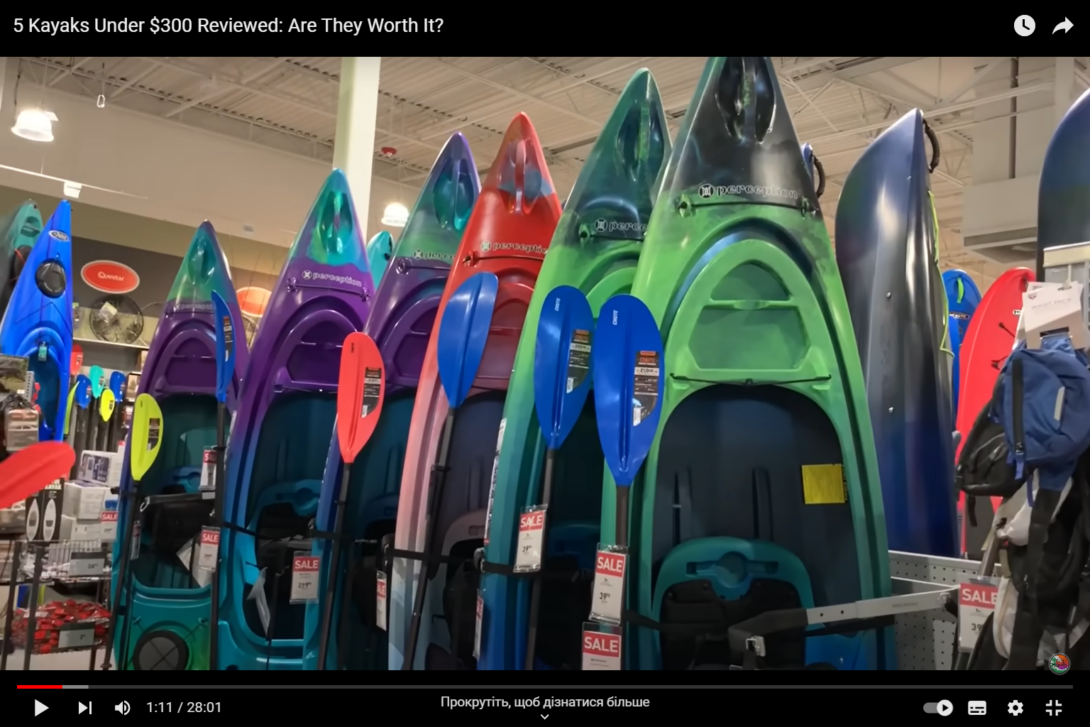
Maintenance Costs: Keeping Your Kayak Shipshape
Owning a kayak entails more than just the initial purchase price. Maintenance costs are a crucial consideration in ensuring the longevity and performance of your kayak.
Routine maintenance tasks such as cleaning, inspections, and minor repairs contribute to the overall cost of ownership. Additionally, investing in quality cleaning supplies, replacement parts, and protective gear is essential to keeping your kayak in optimal condition.
Where to Buy: Sporting Goods Stores vs. Online Retailers
The choice of where to purchase your kayak can significantly influence the overall cost. Two primary options are sporting goods stores and online retailers, each with its own set of advantages and considerations.
Sporting Goods Stores:
- In-Person Assistance: Sporting goods stores provide the advantage of in-person assistance and expert advice from staff;
- Physical Inspection: You can physically examine the kayaks, allowing you to assess their condition and features firsthand;
- Immediate Purchase: You can make an immediate purchase without waiting for shipping.
Online Retailers:
- Wider Selection: Online retailers often offer a broader range of options, allowing you to explore various brands and models;
- Comparative Shopping: Online platforms enable easy comparison of prices and features across different retailers;
- Convenience: Online shopping offers the convenience of browsing and purchasing from the comfort of your home.
In the end, the decision depends on your preferences, location, and comfort level with online shopping.
Kayak Rental Prices: Trying Before You Buy
Renting a kayak before making a purchase is a prudent way to experience the activity firsthand and determine if it aligns with your interests and preferences. Kayak rental prices vary based on factors such as location, type of kayak, and the duration of your rental.
Renting provides an opportunity to test different types of kayaks and gain insights into what suits you best. Additionally, it allows you to experience different water conditions and environments before committing to a purchase.
Longevity and Value: A Cost Analysis Over Time
While the initial cost of a kayak is a significant consideration, evaluating its longevity and the value it brings to your life is equally important. A well-maintained kayak can provide years of enjoyment and outdoor experiences, making it a worthwhile investment in the long run.
Consider the frequency of use, the joy derived from kayaking, and the memories created over time. When viewed through this lens, the cost of a kayak can become more justified.
Environmental Impact: The Price of Sustainable Kayaking
In recent years, the concept of sustainable kayaking has gained traction. Sustainable practices involve using eco-friendly materials, reducing waste, and minimizing the environmental impact of kayaking activities.
While sustainable kayaking may entail a slightly higher initial cost due to the choice of materials and products, the long-term benefits for the environment and future generations make it a worthwhile investment.
Kayak Price Fluctuations: Understanding Market Trends
The kayak market, like any other, experiences fluctuations in prices influenced by various factors. Seasonality, demand, economic trends, and even technological advancements can impact the cost of kayaks.
Staying informed about these market trends can help you make more strategic and cost-effective decisions when purchasing a kayak. Timing your purchase during sales events or periods of lower demand can result in significant savings.
Expert Advice: Tips for Finding the Best Deals
Experts in the field of kayaking offer valuable insights into securing the best deals on your desired kayak. Here are some tips to consider:
- Sales Events: Keep an eye out for sales events and promotional periods when prices may be significantly discounted;
- Comparative Shopping: Compare prices across different retailers to ensure you’re getting the most competitive deal;
- Previous Model Years: Consider purchasing a previous model year kayak, as they often come with reduced prices to make room for newer models.
Kayak Demos and Test Drives: Exploring Worth the Price
The idea of investing in a kayak can be daunting, especially if you’re uncertain about its performance and suitability for your needs. Many retailers offer kayak demos and test drives, which provide a hands-on experience before committing to a purchase.
Participating in a kayak demo allows you to explore the kayak’s handling, stability, and comfort. By testing its features in a controlled environment, you can better assess whether the kayak’s attributes justify its price.
Kayak Insurance: Protecting Your Investment
While not mandatory, considering kayak insurance can add a layer of protection to your investment. Insurance policies designed for kayaks can cover expenses related to damage, theft, accidents, and even liability.
Although this adds to the upfront cost, having insurance can provide peace of mind, especially if you’re concerned about potential risks to your valuable equipment.
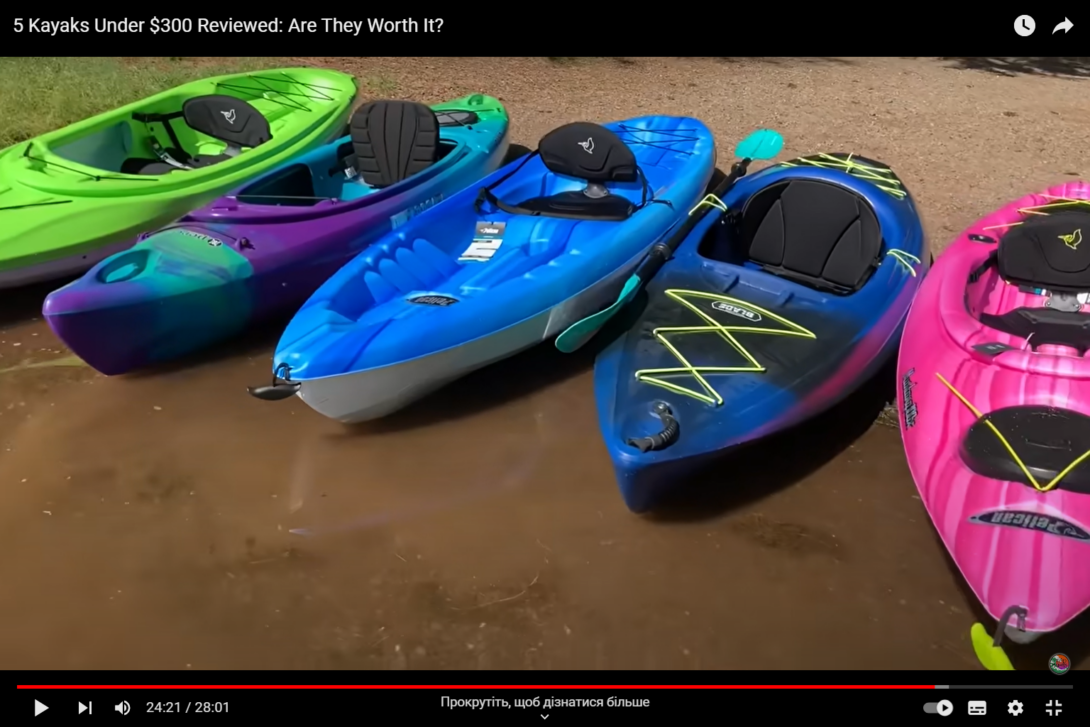
DIY Kayak Building: Cost-Effective or Pricey Pursuit?
The allure of building your own kayak from scratch can be enticing, offering a truly personalized and unique vessel. However, it’s essential to acknowledge that the cost-effectiveness of this pursuit can vary.
While building your kayak can save you money on labor costs, it’s important to factor in the expenses associated with materials, tools, and the time commitment required for construction. In some cases, building a kayak from scratch may not necessarily result in a significant cost savings compared to purchasing a pre-made model.
Transportation Expenses: Hauling and Storing Your Kayak
The expenses associated with owning a kayak extend beyond the kayak itself. Transporting and storing your kayak necessitate additional considerations and costs.
Roof racks, kayak trailers, and other transportation accessories are essential for safely transporting your kayak to and from the water. Similarly, investing in storage solutions, whether at home or a dedicated facility, is vital for maintaining the integrity and condition of your kayak over time.
Kid-Friendly Kayaks: Price Range for Family Adventures
Introducing your family to the joy of kayaking is a wonderful experience, and kid-friendly kayaks cater to the needs of young adventurers. These smaller-sized kayaks are designed with safety features, ease of use, and comfort in mind, making them ideal for family outings.
Investing in a kid-friendly kayak ensures that your children can join you in exploring the water while learning valuable skills and enjoying quality time outdoors.
Fishing Kayaks: Unveiling the Cost of Angling
For avid anglers, fishing kayaks are a natural choice, offering specialized features tailored to fishing excursions. These kayaks typically come equipped with rod holders, storage compartments, and other fishing-specific amenities.
While fishing kayaks can fall within a broad price range, they are an investment worth considering for those who are passionate about combining kayaking with angling adventures.
Touring Kayaks: Prices for Extended Water Expeditions
Touring kayaks are designed for extended adventures on the water, making them a preferred choice for kayakers who crave long-distance exploration. While they may carry a higher price tag, their enhanced features, storage capacity, and comfort justify their cost for enthusiasts seeking to embark on unforgettable journeys.
Whitewater Kayaks: Riding Rapids at What Cost?
Whitewater kayaking is a thrilling pursuit that requires specialized equipment, including whitewater kayaks designed to navigate challenging rapids. Due to their intricate design and enhanced durability, these kayaks often command higher prices than recreational models.
Investing in a whitewater kayak provides access to an exhilarating and adrenaline-pumping experience that’s well worth the cost for those who seek the rush of challenging water environments.
Inflatable Kayaks: Price Points and Portability
Inflatable kayaks are celebrated for their portability and convenience, allowing kayakers to explore water bodies without the need for a traditional hard-shell kayak. These kayaks vary in price based on factors such as durability, features, and intended use.
While inflatable kayaks may generally be more affordable than hard-shell counterparts, investing in a higher-quality inflatable kayak can offer greater longevity and a more enjoyable kayaking experience.
Sit-On-Top vs. Sit-In Kayaks: Which Costs More?
The choice between a sit-on-top kayak and a sit-in kayak hinges on personal preference and intended use. Sit-on-top kayaks offer ease of use and are generally more affordable due to their simpler construction.
On the other hand, sit-in kayaks tend to provide better protection from the elements and are often preferred by those who seek a more immersive and traditional kayaking experience. Their slightly higher price is attributed to their added features and design complexity.
Kayak Accessories: Price List for Paddles, Life Jackets, and More
Equipping yourself with essential kayak accessories is essential for safety, comfort, and an enjoyable experience on the water. Here’s a breakdown of some common kayak accessories and their associated costs:
- Paddles: The cost of paddles can vary based on material and design, with prices ranging from $50 to $200 or more;
- Life Jackets: Safety comes first, and investing in a quality life jacket can cost between $50 and $150;
- Spray Skirts: Spray skirts, used in sit-in kayaks to keep water out, can range from $50 to $150;
- Dry Bags: Dry bags are crucial for protecting your belongings from water, with prices starting at around $20;
- Kayak Seats: Upgrading your kayak’s seat for enhanced comfort can range from $50 to $150;
- Storage Accessories: Storage compartments, cargo nets, and bungee cords can cost between $10 and $50.
These accessories, while additional expenses, are integral to a safe and enjoyable kayaking experience.
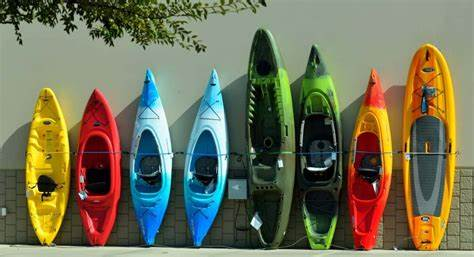
Kayak Upgrades: Enhancing Performance and Aesthetics
Personalizing your kayak with upgrades can elevate both its performance and aesthetics. These upgrades, while optional, can significantly enhance your kayaking experience.
Common kayak upgrades include:
- Upgraded Seats: Investing in a more comfortable and ergonomic seat improves your comfort during longer outings;
- Performance Paddles: High-quality paddles enhance your efficiency and paddling experience;
- Rudders and Skegs: These accessories improve tracking and stability in varying water conditions;
- Additional Storage: Adding storage compartments and hatches increases your kayak’s capacity for gear and supplies;
- Foot Pedals: Adjustable foot pedals enhance your control and stability, particularly in longer kayaking sessions.
While these upgrades do come at an additional cost, they can transform a standard kayak into a vessel tailored to your preferences and needs.
Kayak Resale Value: A Look at Depreciation
Understanding the concept of kayak resale value is crucial, as it can influence your decision-making process. While kayaks do depreciate over time, some factors can impact how well a kayak retains its value:
- Brand Reputation: Quality brands tend to retain value better due to their reputation for durability and performance;
- Condition: Well-maintained kayaks in good condition hold their value better than those with visible wear and tear;
- Features: Kayaks with desirable features and accessories tend to have a higher resale value
- Demand: The demand for certain kayak models can influence their resale value in the market;
Considering these factors can help you make a more informed decision, taking into account both the initial investment and potential future resale value.
International Variations: Kayak Prices Across Different Regions
It’s important to note that kayak prices can vary significantly based on geographic location and local market conditions. Different regions may have unique supply and demand dynamics, economic factors, and import costs that influence the cost of kayaks.
Researching regional pricing can provide valuable insights and help you make an informed decision when considering a kayak purchase.
Kayak Safety: Is a Higher Price Tag Safer?
The correlation between kayak price and safety is a subject of consideration. Higher-priced kayaks may offer advanced safety features that contribute to a more secure and comfortable kayaking experience.
These safety features might include:
- Stability Enhancements: Kayaks designed with enhanced stability are less likely to tip over, particularly in rough water;
- Improved Tracking: Better tracking capabilities result in straighter and more controlled paddling;
- Quality Materials: Higher-priced kayaks often utilize more durable materials that contribute to the kayak’s longevity;
- Ample Buoyancy: Kayaks with superior buoyancy are more stable, especially in turbulent waters.
Ultimately, while a higher price doesn’t guarantee safety, it’s worth considering how safety features can impact your kayaking experience and peace of mind.
Kayak Maintenance: Costs of Upkeep and Repairs
Owning a kayak requires ongoing maintenance to ensure its longevity and performance. Routine maintenance costs encompass various aspects, including cleaning supplies, replacement parts, and potential repairs.
Maintenance tasks to budget for include:
- Cleaning Supplies: Cleaning solutions, brushes, and protective sprays are essential for keeping your kayak in optimal condition;
- Replacement Parts: Over time, parts such as hatch covers, bungee cords, and handles may need to be replaced;
- Repairs: Addressing wear and tear, minor damage, and wear on accessories may require professional repairs.
Budgeting for kayak maintenance is essential to preserving the value and functionality of your investment over the long term.
Kayaking Clubs and Memberships: Adding to the Price
For kayakers who seek a sense of community and shared experiences, joining kayaking clubs or memberships can be a valuable addition to your kayaking journey.
While clubs and memberships can come with associated fees, they offer benefits such as:
- Group Outings: Participate in organized group kayaking trips, which provide camaraderie and shared adventures;
- Skill Enhancement: Access workshops, training sessions, and resources to improve your kayaking skills;
- Events and Competitions: Engage in events, races, and competitions organized by the club or membership.
The investment in these clubs and memberships contributes to an enriched kayaking experience and the opportunity to connect with fellow enthusiasts.
Navigating Kayak Brands: Researching Reputation and Prices
Choosing the right kayak brand is a pivotal decision that intertwines with price considerations. Different brands offer varying levels of quality, performance, and reputation, which can impact the overall cost of your kayak.
Researching Brand Reputation
When evaluating kayak brands, it’s essential to consider their reputation within the kayaking community. Reputable brands often have a history of producing high-quality and reliable kayaks. Look for brands with positive customer reviews, awards, and a track record of innovation.
Impact on Price
Brands with strong reputations tend to command higher prices due to their commitment to quality and performance. While these kayaks may come with a steeper upfront cost, they often provide better durability, enhanced features, and a higher resale value.
Comparing Brand Offerings
Researching different brands allows you to compare offerings, features, and price points. Some brands specialize in specific types of kayaks, such as fishing or touring kayaks, while others offer a diverse range of options. Carefully weigh the benefits of each brand’s offerings against their associated costs.
Final Thoughts on Kayak Costs
The realm of kayak costs is multifaceted and dynamic, influenced by various factors that cater to different preferences and needs. As you explore the options available and weigh the price considerations, remember that the true value of kayaking extends beyond the initial purchase price.
Whether you’re a budget-conscious beginner, an adventure-seeking enthusiast, or a family looking to share outdoor experiences, understanding the nuances of kayak pricing empowers you to make an informed decision that aligns with your aspirations.
